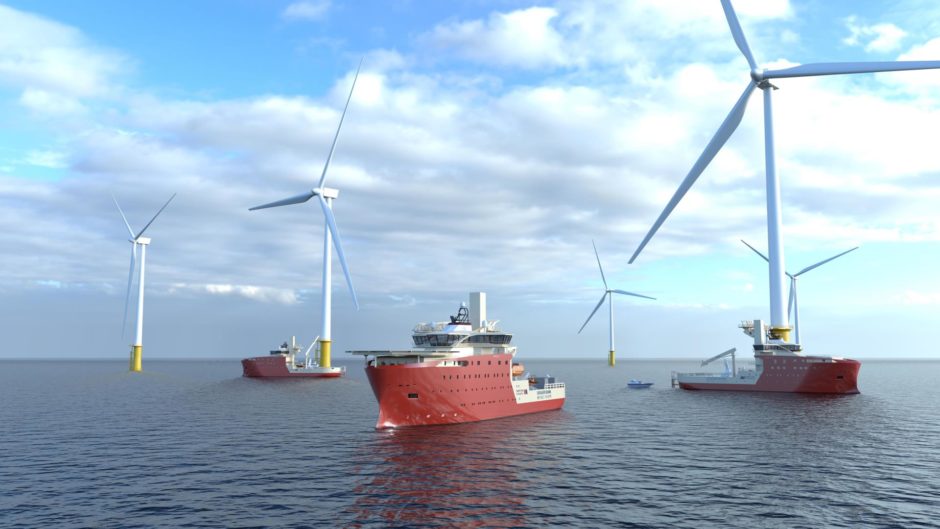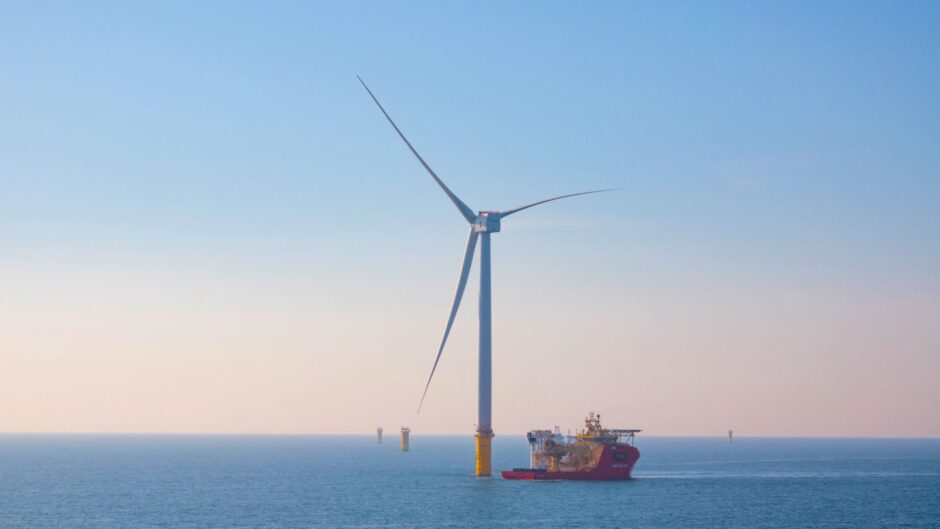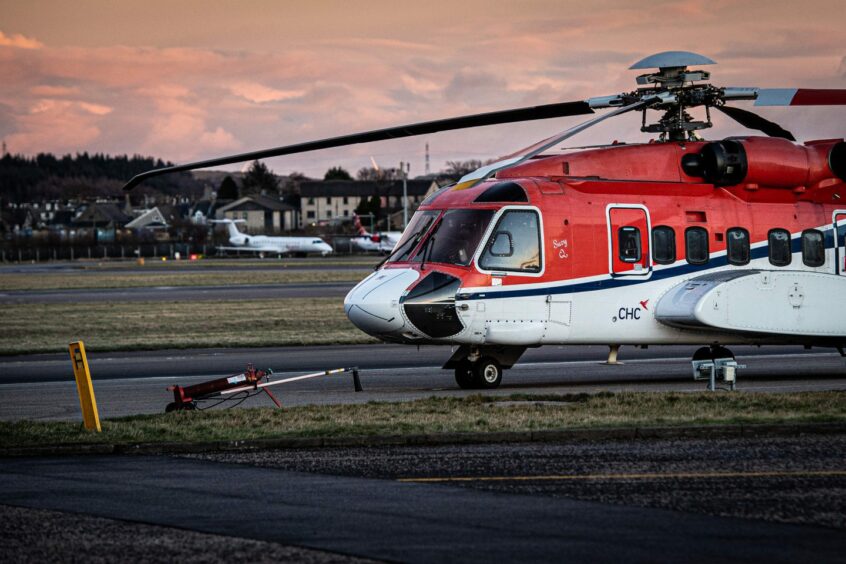The world’s largest offshore wind farm, Dogger Bank, has produced first power that will go to British homes and businesses.
The development, which is still under construction, was praised by UK prime minister Rishi Sunak with the Conservative Party leader saying Dogger Bank will bolster energy security, create jobs, lower electricity bills and keep the country on track for Net Zero.
Mr Sunak said: “I’m proud that this country is already a world leader in reaching Net Zero by 2050, and by doubling down on the new green industries of the future, we’ll get there in a way that’s both pragmatic and ambitious.
“That’s why it’s fantastic to see the world’s largest wind farm, Dogger Bank, generating power for the first time today from UK waters, which will not only bolster our energy security, but create jobs, lower electricity bills and keep us on track for Net Zero.”
Dogger Bank operator SSE says that more than 2,000 UK jobs have been created or supported in relation to the construction and operation activities of Dogger Bank.
In July this year, SSE announced that first power was expected in “coming weeks.”
What is Dogger Bank?
The 3.6 GW Dogger Bank Wind Farm is being built off the East Coast of England, 70 nautical miles off the coast of Yorkshire, in three 1.2 GW phases: Dogger Bank A, B and C.
This is in line with what the firm has previously said about when power generation will start at the project off the East Coast of England, with SSE previously saying first power was expected in “Summer 2023 for Dogger Bank A”.
Dogger Bank B had been previously revealed to begin producing power in 2024 with commercial operations due in 2025 and Dogger Bank C is set to begin operations in 2026.
Alistair Phillips-Davies, chief executive of SSE, said: “There’s been lots of talk about the need to build homegrown energy supplies, but we are taking action on a massive scale.
“Dogger Bank will provide a significant boost to UK energy security, affordability and leadership in tackling climate change. This is exactly how we should be responding to the energy crisis.
“But it is also a landmark moment for the global offshore wind industry, with Dogger Bank demonstrating just what can be achieved when policymakers, investors, industry, and communities work together to achieve something truly remarkable.”
The Dogger Bank offshore wind farm is a joint venture between SSE Renewables (40%), Equinor (40%) and Vårgrønn (20%).
Dogger Bank output
Power from the project’s first offshore wind turbine at Dogger Bank A is now being transmitted to the UK’s national grid via Dogger Bank’s high-voltage direct current (HVDC) transmission system, marking the first-time use of HVDC technology on a UK wind farm.
Dogger Bank also marks the first use of HVDC transmission technology to connect a British wind farm to National Grid’s UK energy network.
This includes the installation of the world’s first unmanned offshore HVDC substation platform at the site, as well as first use of Hitachi Energy’s HVDC Light transmission system.
First power followed the installation of the first of GE Vernova’s Haliade-X 13MW turbines, one of the largest and most powerful globally, at the Dogger Bank site.
This is the first time Haliade-X units have been energised offshore anywhere in the world.

SSE says that each rotation of the near 558 feet long blades on Dogger Bank’s first operational turbine can produce enough clean energy to power an average British home for two days.
When fully complete, Dogger Bank’s 3.6GW capacity will comprise 277 giant offshore turbines capable of producing enough clean energy to power the equivalent of six million homes annually and deliver yearly CO2 savings equivalent to removing 1.5 million cars from the road.
These output predictions are based on the Typical Domestic Consumption Values in Britain report by Ofgem for home use and 1.5 million cars based on an average petrol car, with an average annual mileage of 7,400 miles.
‘Dogger Bank shows that offshore wind is taking centre stage’
RenewableUK’s chief executive Dan McGrail commented on the news, saying: “The sheer scale of Dogger Bank shows that offshore wind is taking centre stage in Britain’s clean energy system as we move away from expensive imported fossil fuels to secure cheap homegrown power.
“This massive innovative clean energy project is a significant step forward for the UK’s world-leading offshore wind industry, creating thousands of jobs and attracting billions in private investment.
“Coastal communities in the north of England and beyond are benefitting from the new industrial opportunities which offshore wind is providing.
“This shows that the Government is right to press ahead with policies to increase our energy security by ensuring that vital new clean energy projects can be built faster”.
Earlier this year Aberdeen-based helicopter services firm CHC revealed that it has been providing crew change support for the first phase of the project since April.
While CHC does have a North Sea base in Aberdeen, the work is being carried out by AW139 and H175 aircraft based at its Norwich hub.
Hailed as a “landmark project” for the firm, CHC says it marks a “significant milestone” in its aim to provide supporting sustainable energy initiatives.
Recommended for you




 © Supplied by SSE
© Supplied by SSE © Supplied by Image: Wullie Marr /
© Supplied by Image: Wullie Marr /






